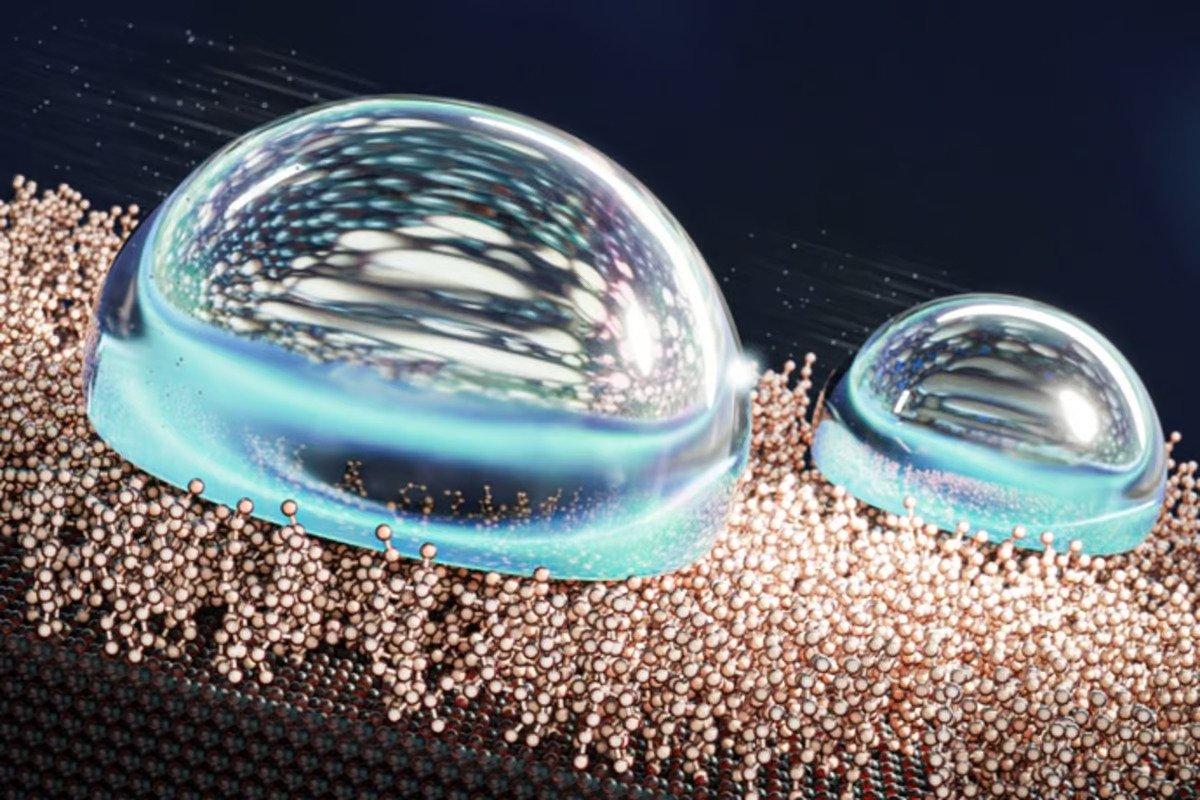Scientists have created an incredibly good water-repelling surface. They did this by putting a special liquid-like coating on it, making water slide off at angles much flatter than other water-repellent materials.
Being able to make things repel water is important for many things, like cars, boats, and airplanes. Most super-water-repellent surfaces work by trapping air or liquid, which makes water form into drops and roll off easily. But a new technology creates what’s called “liquid-like surfaces” (LLS), which have layers of molecules that act like a liquid but are stuck to the surface. This makes it feel like a surface that’s been lubricated, so water just slides off.
In a recent study, scientists in Finland used a material called “self-assembled monolayers” to create a new LLS on a silicon surface. By adjusting things like temperature and water content during the process, they could control how much of the silicon was covered by the monolayers.
When most of the surface was covered, it became super-water-repellent, and water formed into drops and rolled off. But to the surprise of the researchers, even when there was less coverage, the surface was still slippery and made water slide off, without forming drops which was unexpected.
“It was counterintuitive that even low coverage yielded exceptional slipperiness,’ said Sakari Lepikko, lead author of the study. “We found that, instead, water flows freely between the molecules of the SAM at low SAM coverage, sliding off the surface. And when the SAM coverage is high, the water stays on top of the SAM and slides off just as easily. It’s only in between these two states that water adheres to the SAMs and sticks to the surface.”
The team claims that some versions of their coated surfaces are the best at repelling water ever. Most super-water-repellent surfaces have water roll off at angles as low as 5 degrees, but the Aalto team’s surface can make water roll off at an incredibly shallow 0.01 degrees, meaning water will slide off nearly any surface that’s not perfectly flat.
Normally, scientists measure water repellency using something called the “contact angle,” which depends on how much of a curve water droplets form on the surface. But this measure doesn’t work well with the SAM-coated surfaces because water can spread out like a film but still slide off easily.
The SAM coating is interesting, but the researchers admit it’s quite thin and can wear off easily. They plan to keep working on it to make it better for various industrial uses.
“Things like heat transfer in pipes, de-icing and anti-fogging are potential uses,” said Lepikko. “It will also help with microfluidics, where tiny droplets need to be moved around smoothly, and with creating self-cleaning surfaces. Our counterintuitive mechanism is a new way to increase droplet mobility anywhere it’s needed.”

